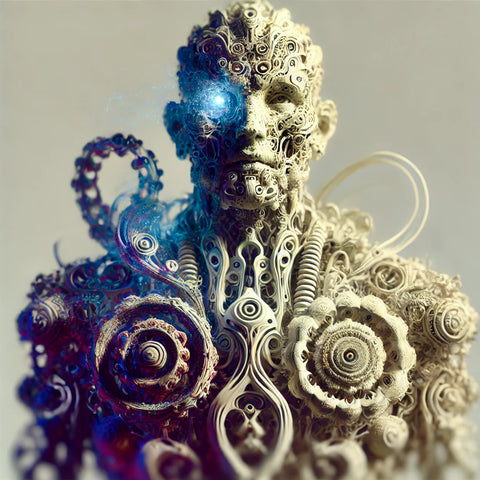
5 AI Art Trends Every Digital Artist Should Know in 2024
Share
5 AI Art Trends Every Digital Artist Should Know in 2024
In 2024, AI art is exploding with new possibilities, pushing the boundaries of creativity and innovation. The rise of AI-generated art has transformed the way digital artists approach their work, offering tools that range from hyper-realism to abstract experimentation. In this article, we explore the five most exciting AI art trends shaping the industry this year, helping creators stay ahead of the curve and unlock their full potential.
1. Generative Hybrid Art: Blending Styles for Infinite Possibilities
Generative AI tools are evolving to seamlessly blend multiple art styles, from Renaissance painting techniques to futuristic cyberpunk. In 2024, we see AI prompts becoming more adept at merging distinct styles in unexpected ways, producing visually stunning results. Artists can combine impressionist brushwork with neon-glow aesthetics or fuse classical sculpture details with digital surrealism. The mix of traditional and modern elements in hybrid art has become a go-to method for creating pieces that feel fresh yet timeless.
Tip: Try prompts that mix older art movements like Baroque with futuristic sci-fi themes for surprising outcomes.
2. AI-Driven Sculpting and 3D Art
3D modeling and sculpting tools powered by AI are becoming indispensable for artists looking to push their work beyond the 2D canvas. In 2024, AI programs can now autonomously create intricate 3D forms, opening up a new frontier in digital sculpture. Artists can explore virtual installations, character design, and environmental modeling, where AI handles complex geometry and lighting, leaving creators to refine and enhance the results.
Tip: Experiment with prompts that guide AI to create surreal 3D sculptures, particularly when designing futuristic architecture or biomechanical lifeforms.
3. Hyper-Personalized AI Art Styles
Personalization in AI-generated art has reached new heights. AI models are now being fine-tuned based on individual user preferences, learning from an artist’s style to produce custom outputs. Whether you're into abstract geometric art or photo-realistic portraits, you can train AI to mirror your aesthetic. This level of control enables a deeper collaboration between artist and machine, as AI adapts and evolves with your creative vision.
Tip: Train AI models to mimic your brushstroke patterns, color palettes, or textures to produce work that feels uniquely yours while accelerating your creative process.
4. Text-to-Video Art Generation
While text-to-image generation has revolutionized the digital art landscape, 2024 introduces a new frontier: text-to-video generation. AI tools are now capable of translating prompts into dynamic video sequences, offering digital artists endless possibilities in animation, film production, and interactive media. These tools can craft entire cinematic scenes from a single sentence, enabling artists to explore storytelling in new, visually captivating ways.
Tip: Dive into AI tools like Runway or Pika Labs that specialize in video synthesis and experiment with short AI-generated animations for social media or portfolio work.
5. Sustainable AI Art and Ethical Creativity
As the environmental impact of AI grows, artists are increasingly adopting sustainable practices. 2024 brings a push towards more energy-efficient AI models that minimize carbon footprints. Additionally, ethical AI art creation is a major conversation, with artists seeking tools that respect copyright, diversity, and human-centered design. Creators now prioritize ethical datasets and environmentally conscious AI art solutions, shaping the industry with a responsible approach.
Tip: Seek AI platforms committed to using ethical datasets and energy-efficient computing to ensure your work contributes positively to both the art community and the planet.







